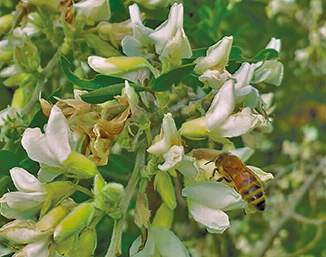
Tree lucernes flowering on roadsides, yellow wattles glowing. These are the harbingers of Spring in the Kapiti Horowhenua. Slightly warmer temperatures this month interspersed with a couple of hard frosts and days drawing out, tempt us into feeling that Winter is coming to a close. Longer daylight hours are key to Spring-like plant and animal activity.
Bees that have survived the Winter are venturing out looking for pollen and nectar sources in the middle of warmer days. The window of opportunity for them to fly is only a few hours long. Cold, wet or windy days restrict them to their hives.
For the beekeeper, now is the time to check hives for honey supplies and make sure that the queen in still in the hive even though she may not yet be laying again. If honey is low, feed strong sugar syrup and if you have empty boxes on the hive reduce the volume to the smallest possible space by removing any boxes off the top of the hive. The bees then have the least volume to keep warm. Make sure you have varroa treatment strips ready for spring and any new woodwork also ready.
When the bees start to move in response to nectar flows from willow and other early flowering plants and warmer temperatures they will expand very quickly. This will probably not happen until September.
In September check for swarm cells and make sure your bees have enough space to expand in the hive. Failure to do this will mean bees in the trees.

